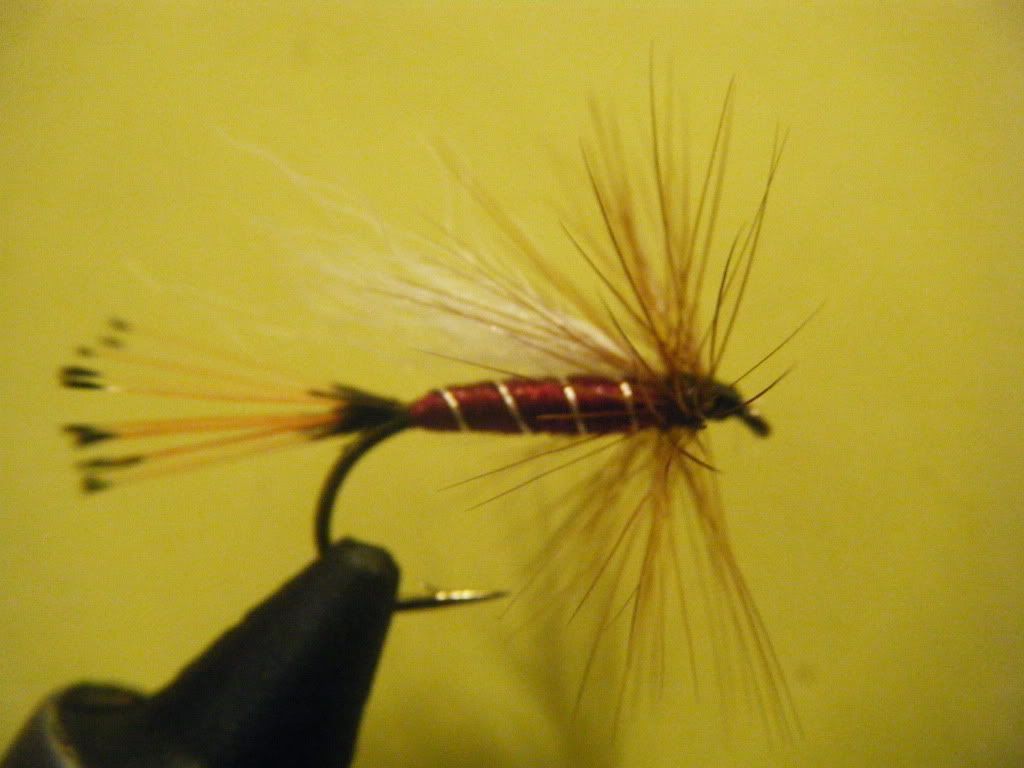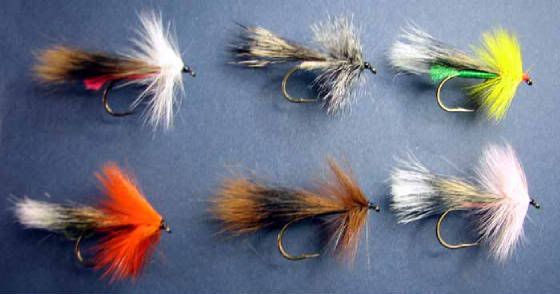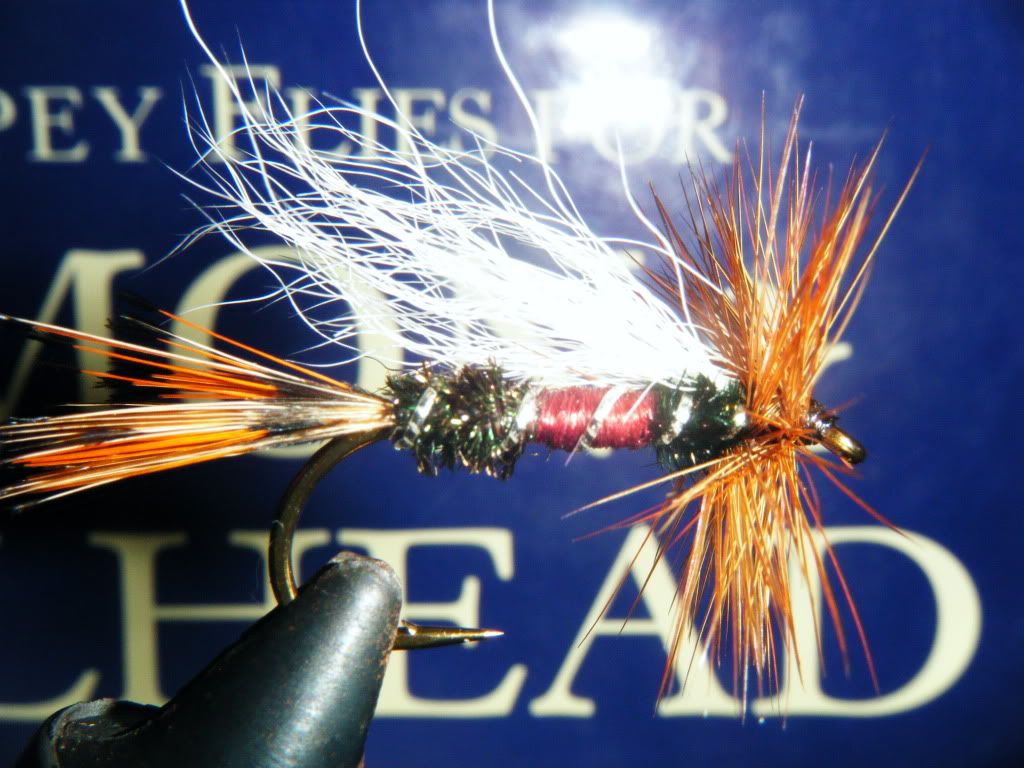
Originally Posted by
JeffHamm

Ooo! I like that!
For Nova Scotia brookies, some dark montreal's would be good too. They would get you practicing your quill wings. Size 10 and 12 would be good. Some bucktail streamers, like Mickie Finns are a must have (and they will take Atlantics too!). Bucktail versions of Parmachene Belles are good to have, but do make sure you progress to the married wing slip version. I've generally preferred the red stripe down the middle rather than the red stripe on top, but both will take trout. Also, I know some people do well with a Jenny Lind, so if you can find some lavender quills and hackle then give that a go (tail: lavender fibres; body: yellow floss; rib: flat gold; throat hackle: furnace; wing: married quill slips: lavender over red over lavender). Grizzle kings are good too, and I would suggest tying them with the wing streamers free, and also with some with the wing lashed down along the body Matuku-style (in which case it would be called a green Dorathy here in New Zealand).
Anyway, I've always done well with P.Belle's and Royal Coachman's for trout back home (in Nova Scotia). Last time (2009), I was chatting with a fellow who snapped up a couple as we talked in a pool that I had just skunked. He was fishing a dry fly called a MacIntosh, but I didn't get a good look at it. It was generally brownish (perhaps hare's ear dubbing, and fox squirrle tail/wings, brown/furnace hackle?). If you come across the dressing for it, I would be interested in it.
Funny how that just brought back some memories for me. Thanks!
- Jeff




 Reply With Quote
Reply With Quote



